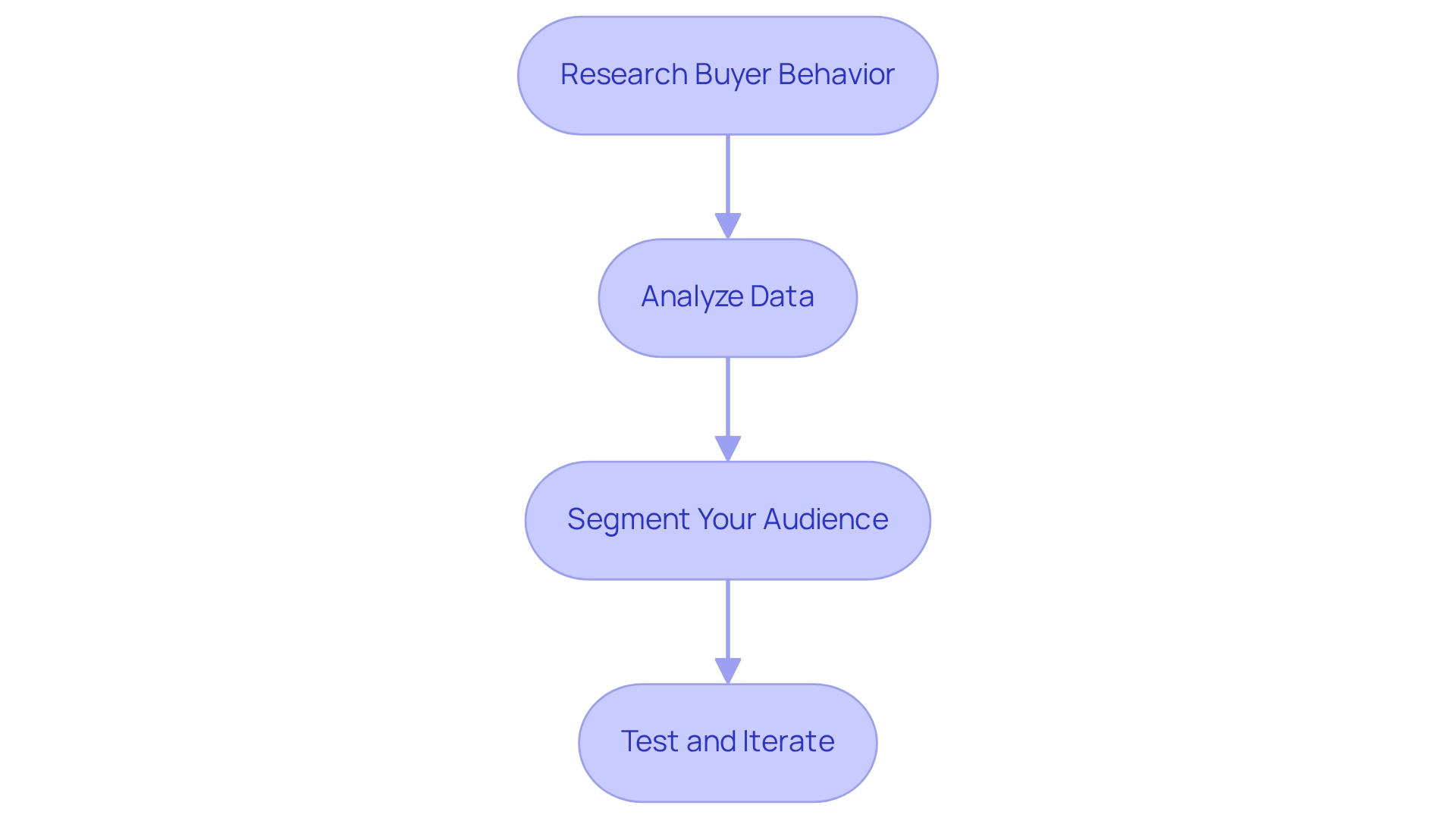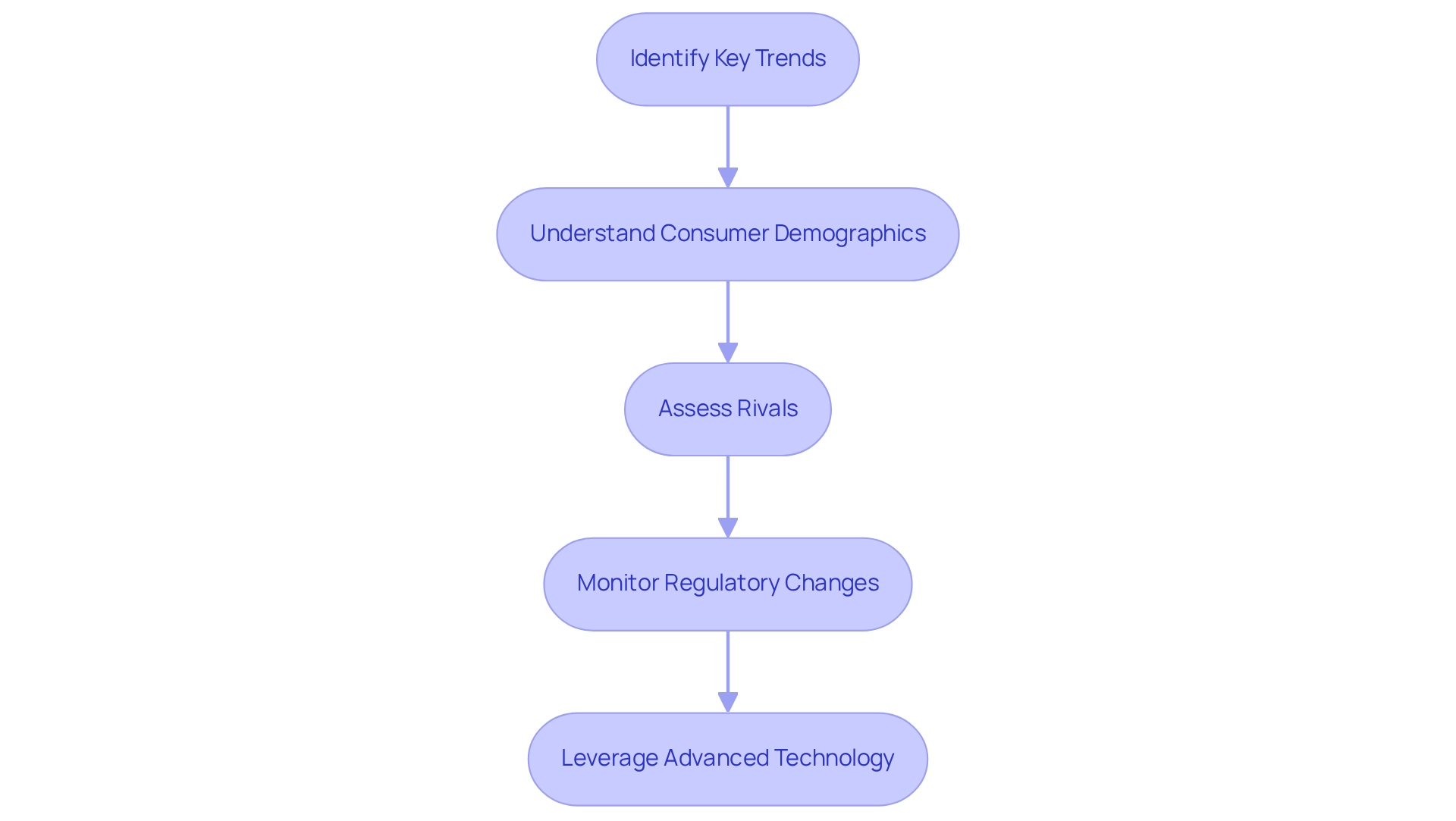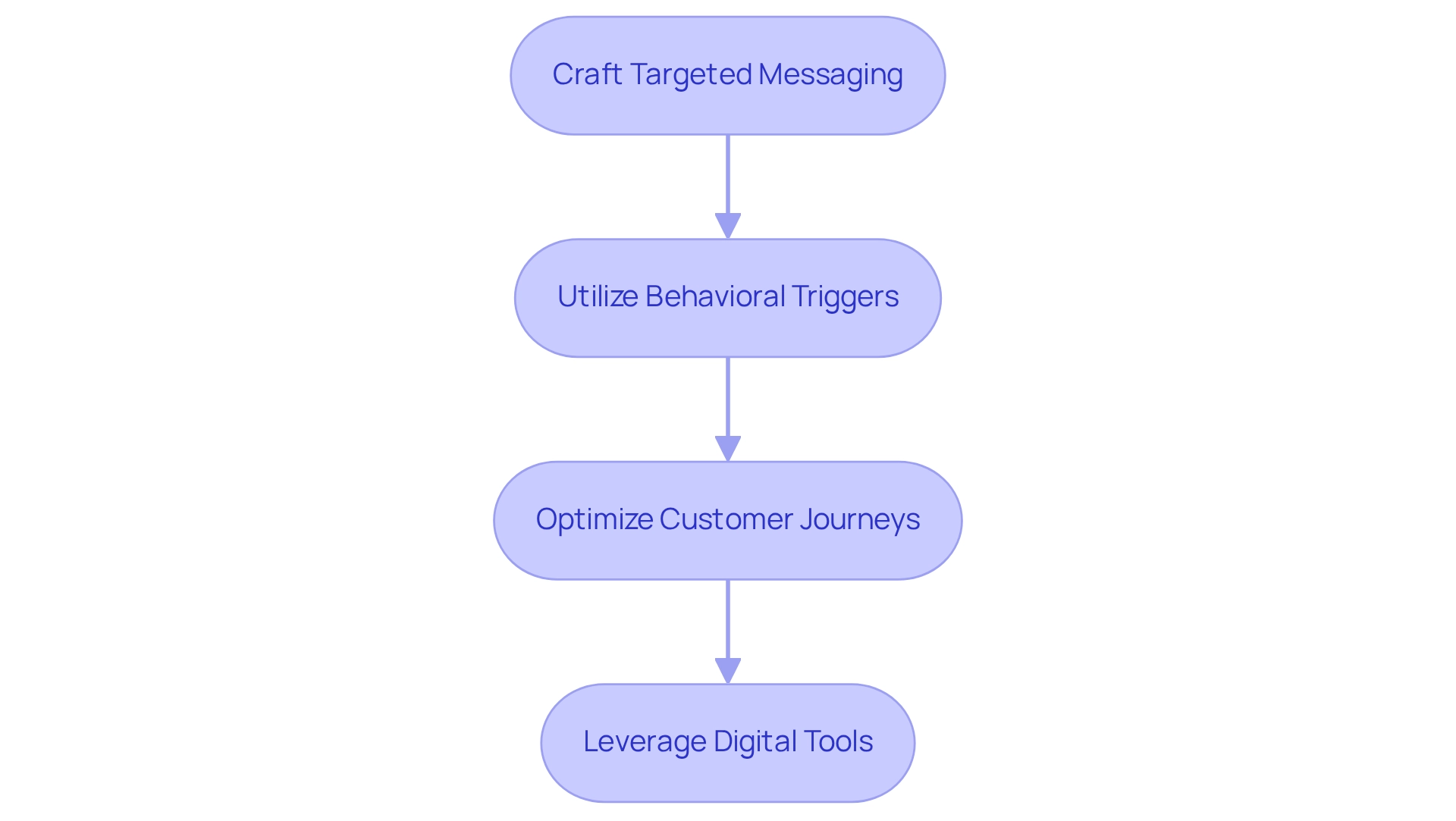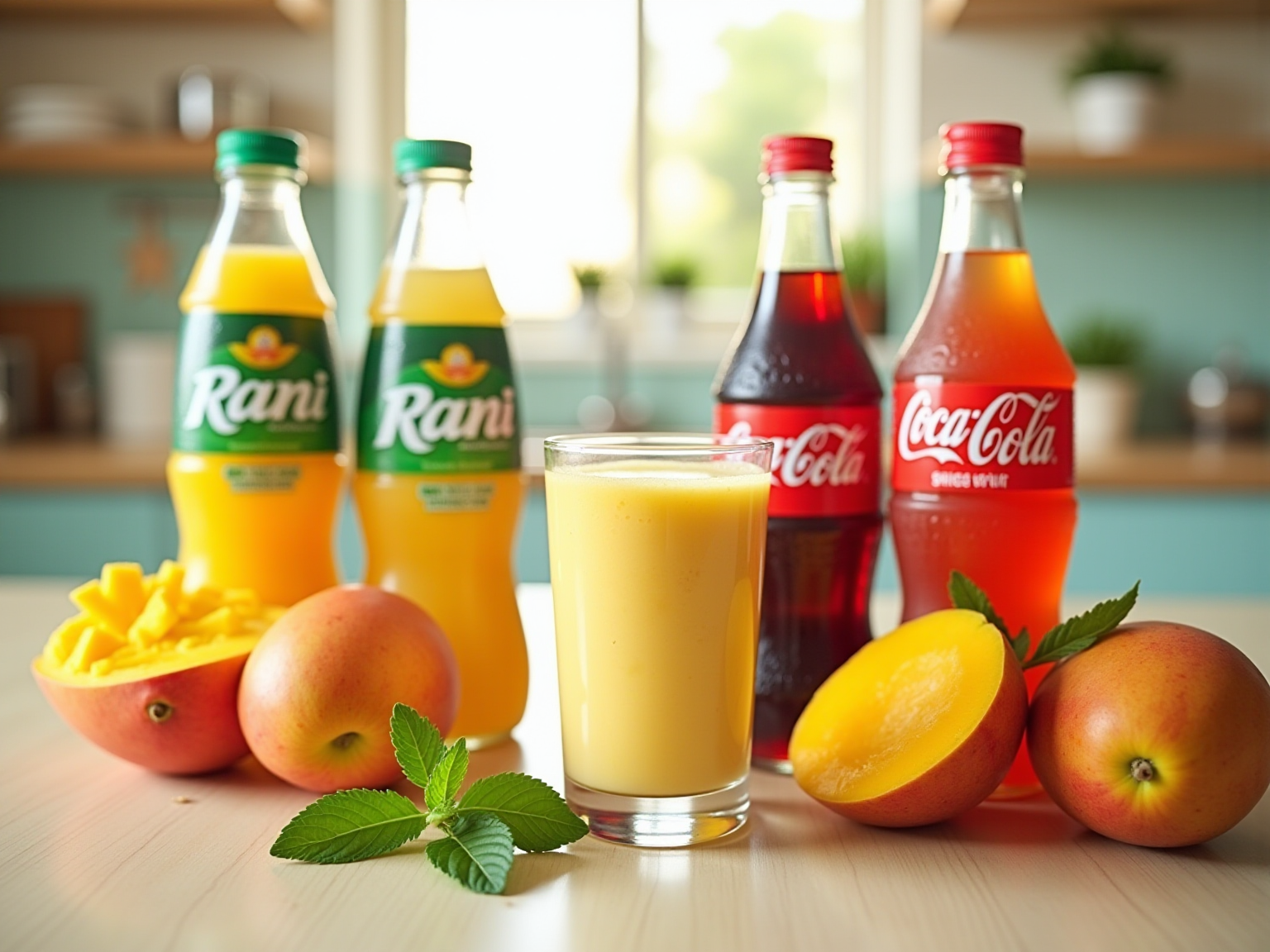General
Master Behavioral Insights for Marketing in the Emirates Food and Beverage Market
Overview
The article delves into the mastery of behavioral insights as a critical tool for enhancing marketing strategies within the Emirates food and beverage market. It underscores the necessity of comprehending consumer behavior through rigorous research and data analysis. This understanding empowers marketers to design targeted campaigns that resonate with specific audience segments and adapt seamlessly to the ever-evolving market trends.
Introduction
In today’s marketplace, where consumer choices are profoundly shaped by psychological and emotional factors, grasping behavioral insights is paramount for impactful marketing. By exploring the complexities of consumer decision-making, brands can develop campaigns that resonate profoundly with their target audiences.
This article delves into the critical role of behavioral insights in marketing, presenting strategies for:
- Research
- Data analysis
- Audience segmentation
- Iterative testing
Furthermore, it underscores the necessity of adapting to trends within the Emirates food and beverage market, highlighting the imperative for brands to harness these insights to bolster consumer engagement and drive sales. As the landscape evolves, integrating behavioral insights into marketing strategies not only cultivates connection but also positions brands for triumph in an increasingly competitive arena.
Understand Behavioral Insights in Marketing
Behavioral knowledge encompasses the understanding of how consumers make choices influenced by psychological, emotional, and social factors. In marketing, leveraging behavioral insights within the Emirates food and beverage market is crucial for designing campaigns that resonate with target audiences. To effectively harness these insights, consider the following strategies:
-
Research Buyer Behavior: Conduct surveys, focus groups, and market research to gather data on buyer preferences and motivations. Current statistics reveal that innovative consumption behaviors significantly impact purchasing decisions, evidenced by a standardized path coefficient of β = 0.553 in studies concerning electric vehicle adoption. As noted by Chen et al., “Innovative consumption behavior, such as the intention to adopt new technologies, mediates the relationship between individual characteristics and EV adoption intentions.”
-
Analyze Data: Identify patterns in purchasing behavior, including seasonal trends or buyer reactions to promotions. Understanding these patterns can aid in tailoring promotional strategies to meet consumer expectations.
-
Segment Your Audience: Classify your audience into distinct segments based on their behaviors and preferences. This segmentation allows for more targeted promotional strategies that cater to the specific needs of each group.
-
Test and Iterate: Implement A/B testing to ascertain which messages resonate most effectively with various segments. This iterative process fosters ongoing enhancement in marketing efforts, ensuring that campaigns remain relevant and impactful.
Recent studies underscore the significance of psychological factors over perceived green value in shaping buyer decisions, emphasizing the necessity for marketers to cultivate emotional connections. Future research could apply complexity theory to investigate green purchasing patterns, providing insights into evolving buyer behaviors. Successful campaigns, such as the comprehensive plan devised for Quaker Oats, illustrate how behavioral insights in marketing can elevate public awareness and fortify market presence. By integrating these insights into marketing strategies, brands can craft more engaging and impactful campaigns that inspire customer action.

Analyze the Emirates Food and Beverage Market Landscape
To effectively analyze the Emirates food and beverage market landscape, it is essential to follow these strategic steps:
-
Identify Key Trends: Begin by investigating current trends such as health-conscious eating, sustainability, and the rise of digital ordering preferences. The food market data is refreshed biannually, providing valuable behavioral insights that reflect changing buyer behaviors and preferences in the Emirates food and beverage market.
-
Understand Consumer Demographics: Delve deeply into the demographics of your target audience, focusing on critical factors like age, income, and cultural influences. Notably, real per capita consumer spending on food in the UAE stands at approximately 6,055.68 USD, underscoring the market’s potential and revealing significant opportunities for brands to cater to diverse consumer needs.
-
Assess Rivals: Conduct a comprehensive examination of competitors in the market to understand their strategies, strengths, and weaknesses. This evaluation can unveil market gaps that your brand can strategically exploit.
-
Monitor Regulatory Changes: Stay informed about any regulatory changes that may impact the food and beverage industry, including health and safety standards or import/export laws. Being proactive in this regard will ensure adherence and flexibility in your promotional strategies.
-
Leverage Advanced Technology: Utilize advanced technology and analysis tools for a thorough market understanding. As Yolanda Mega, Operations Manager, emphasizes, “Understanding the market landscape is crucial for making informed decisions that drive success.”
By adhering to these steps, brand managers can gain a nuanced understanding of behavioral insights for marketing in the Emirates food and beverage market. This knowledge will empower them to develop effective promotional plans that resonate with clients.

Apply Behavioral Insights to Marketing Strategies
To effectively incorporate behavioral knowledge into your marketing strategies, consider the following steps:
- Craft Targeted Messaging: Leverage insights into buyer motivations to develop messages that resonate with specific segments. Emphasizing health advantages can attract health-conscious individuals, as they increasingly seek products that align with their lifestyle preferences. Research indicates that shoppers spend 128% more when purchasing via email, underscoring the financial benefits of targeted messaging. Furthermore, as dietary patterns evolve, brands must adjust their messaging to reflect these changes, ensuring that content aligns with modern consumer values.
- Utilize Behavioral Triggers: Implement strategies that capitalize on behavioral triggers, such as scarcity through limited-time offers or social proof via customer testimonials. These tactics can significantly enhance purchase motivation. Studies demonstrate that consumers are more inclined to engage when they perceive urgency or validation from others. In the realm of food advertising, employing compelling visuals and narratives that mirror current eating trends can further amplify these triggers.
- Optimize Customer Journeys: Map out the customer journey to identify key touchpoints where behavioral insights can enhance the experience. Personalization is crucial; organizations with a documented personalization plan are more likely to exceed revenue targets. Personalized recommendations based on past purchases can create a more engaging shopping experience, leading to increased customer satisfaction and loyalty. As buyer preferences evolve, continuously refining these touchpoints to align with shifting eating habits is essential.
- Leverage Digital Tools: Utilize digital promotional tools and analytics to observe consumer behavior and adjust strategies in real-time. This data-driven approach enables ongoing enhancement of promotional efforts, ensuring that campaigns remain relevant and effective. Given the constantly evolving digital landscape, staying informed and adaptable is vital for success. Brands should also focus on producing captivating content, such as social media updates and videos, that reflect the latest trends in food consumption.
By emphasizing these approaches, brands in the food and beverage industry can leverage behavioral insights for marketing in the Emirates food and beverage market to develop effective promotional campaigns that connect with their target audience and boost sales. Incorporating statistics into advertising planning merges analytical precision with creative strategies, further enhancing the effectiveness of promotional initiatives.

Troubleshoot Common Challenges in Implementing Insights
Incorporating behavioral knowledge into promotional strategies presents various challenges that require strategic navigation. Here’s how to effectively tackle them:
- Data Overload: The sheer volume of available data can be overwhelming, especially as the digital universe is projected to expand to 40 times its size by 2020. To combat this, focus on key performance indicators (KPIs) that directly align with your marketing objectives. Prioritize actionable insights that drive decision-making and enhance campaign effectiveness. As Jeremy Waite from IBM highlights, many data analysts advocate for a focused approach to manage the increasing complexity of data.
- Resistance to Change: Team members may resist new strategies due to uncertainty or a lack of understanding. To facilitate a smoother transition, invest in training sessions that emphasize the benefits of behavioral insights. Sharing success stories and case studies can illustrate the tangible value these perspectives offer, fostering a culture of innovation.
- Integration Issues: Merging behavioral insights into existing promotional frameworks can be complex. A practical approach is to initiate small-scale pilots of new methods within specific campaigns. This allows for testing and refinement before broader implementation, minimizing disruption and maximizing learning. Research from Harvard Business Review indicates that companies leveraging marketing analytics can better identify and capitalize on market trends, underscoring the importance of effective integration.
- Measuring Success: To evaluate the effectiveness of your strategies, establish clear KPIs from the outset. Continuously analyze performance data and be prepared to adjust your strategy based on insights gained. This iterative process ensures ongoing improvement and alignment with market dynamics. Harriet Durnford Smith, CMO at Adverity, stresses the necessity for marketers to deliver greater value and demonstrate accountability amid economic challenges, highlighting the importance of adaptability in marketing strategies.
By confronting these challenges directly, marketing teams can harness behavioral insights to develop more effective and responsive strategies within the competitive food and beverage sector.

Conclusion
Understanding and applying behavioral insights in marketing is essential for brands aiming to thrive in today’s dynamic marketplace. The exploration of consumer decision-making, influenced by psychological and emotional factors, allows for the development of targeted campaigns that resonate with audiences on a deeper level. By engaging in thorough research, data analysis, audience segmentation, and iterative testing, brands can refine their marketing strategies to align with evolving consumer preferences.
In the context of the Emirates food and beverage market, recognizing key trends and demographics is crucial for creating effective marketing strategies. As the landscape shifts, brands must remain vigilant and adaptable, leveraging advanced technology and insights to stay ahead of the competition. The integration of behavioral insights not only enhances consumer engagement but also drives sales by fostering a strong emotional connection between brands and their audiences.
Ultimately, the successful application of these insights can transform marketing efforts, leading to campaigns that are not only impactful but also sustainable in a competitive environment. As brands continue to navigate challenges and opportunities, embracing behavioral insights will be a cornerstone for achieving long-term success and establishing a loyal customer base. The future of marketing lies in the ability to understand and respond to the nuanced behaviors of consumers, making it imperative for brands to prioritize these insights in their strategic planning.
Frequently Asked Questions
What is behavioral knowledge in the context of marketing?
Behavioral knowledge refers to the understanding of how consumers make choices influenced by psychological, emotional, and social factors.
Why is leveraging behavioral insights important in the Emirates food and beverage market?
Leveraging behavioral insights is crucial for designing marketing campaigns that resonate with target audiences, enhancing their effectiveness.
What are some strategies to harness behavioral insights in marketing?
Key strategies include researching buyer behavior, analyzing data, segmenting the audience, and testing and iterating marketing messages.
How can buyer behavior research be conducted?
Buyer behavior research can be conducted through surveys, focus groups, and market research to gather data on preferences and motivations.
What is the significance of analyzing purchasing behavior data?
Analyzing purchasing behavior data helps identify patterns, such as seasonal trends and buyer reactions to promotions, which can inform tailored promotional strategies.
What does audience segmentation involve?
Audience segmentation involves classifying the audience into distinct groups based on their behaviors and preferences, allowing for more targeted marketing efforts.
How can A/B testing improve marketing campaigns?
A/B testing allows marketers to determine which messages resonate best with different audience segments, fostering ongoing enhancement of marketing strategies.
What role do psychological factors play in buyer decisions?
Recent studies emphasize that psychological factors are more significant than perceived green value in shaping buyer decisions, highlighting the need for emotional connections in marketing.
What future research could enhance understanding of buyer behaviors?
Future research could apply complexity theory to investigate green purchasing patterns, providing deeper insights into evolving buyer behaviors.
Can you provide an example of successful marketing using behavioral insights?
A successful example is the comprehensive marketing plan devised for Quaker Oats, which illustrates how behavioral insights can elevate public awareness and strengthen market presence.



